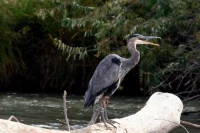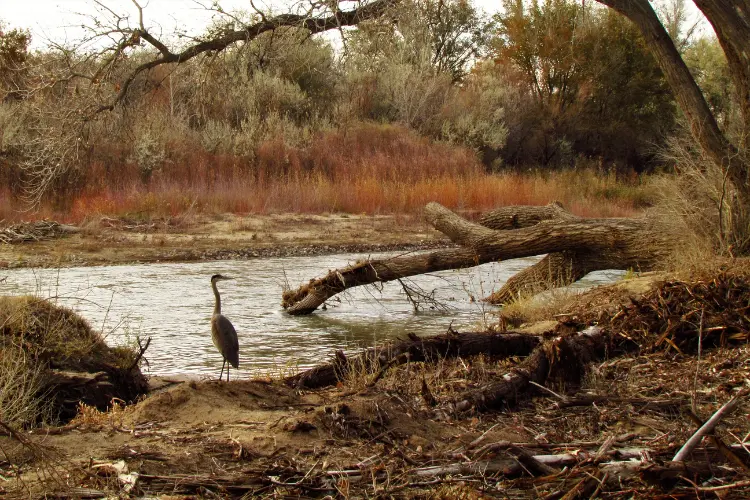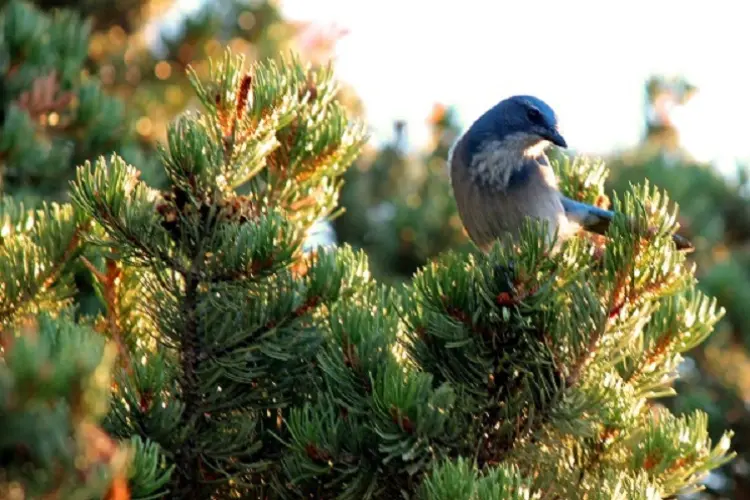

Farmington, located in the northwest corner of New Mexico, is a special spot for bird watching.
There are a few reasons for this. It starts with the diverse habitats in this region — you’ll find river valleys, forests at elevation, and high deserts all interconnected. The multiple rivers provide a water source for all sorts of wildlife, while the diversity of geology and flora supports an equally diverse amount of animals, including birds.
On top of that, this part of New Mexico is right in the path of many species’ migration patterns. This brings us a rotating group of birds depending on the season, from year-round permanent residents to birds escaping the less welcoming northern winters to birds passing through during the spring and summer migrations. (If you ask us, the fall migration is a gem of a time to get out here for birding!) These factors make Farmington and the surrounding area a fantastic spot to bird watch.
What you’ll find
To give you a sense of what to expect, there are about 500 birds on New Mexico’s state bird list. Many of these have been identified annually within the Farmington area, which together make up a list that’s not only quite large, but diverse — everything from songbirds to raptors to freshwater wading birds to sapsuckers and more.
Here are some birds you can expect to find in the region:
- Great Blue Heron
- Bald Eagle
- Red-Naped Sapsucker
- Northern Mockingbird
- European Starling
- Black Phoebe
- Cassin’s Kingbird
- Western Wood Pewee
And that’s just the tip of the iceberg!

Top bird watching locations near Farmington
Here are some of the top locations near us for bird watching:
Riverside Nature Center
With its river habitat a natural oasis, here you’ll find over 135 species. As you can imagine, that makes it quite a popular destination for birding.
On top of that, the Animas River Walk trails make the Riverside Nature Center particularly accessible. It’s the ideal way to explore the river and the species that frequent it.
Lake Farmington
A quick drive northeast of Farmington, the lake covers 250 acres and provides water and habitat for many birds. The shoreline especially, is home to great blue herons, while the surrounding areas have species ranging from the zippy, colorful hummingbird to soaring eagles and more.
To combine bird watching with a nice hike, the Farmington Lake Loop goes 3.6 miles around the lake. It’s a perfect loop to take a walk, get some exercise, and view the wildlife that calls Lake Farmington home.
Morgan Lake
A 1,200-acre lake, this warm water reservoir is an important stop for migratory birds when they’re seasonally passing through. It’s a popular stopover habitat for species like:
- Western Grebe
- Clark’s Grebe
- Wood Duck
- Osprey
- Black Skimmers
- Black-Legged Kittiwake
To get there is just a 20-minute drive west of Farmington to the Navajo Nation, who manages Morgan Lake via the Navajo Nation Department of Fish and Wildlife.
B-Square Ranch
B-Square Ranch is a privately-run 12,000-acre wildlife refuge founded and managed for decades by the Bolack family as a dedicated ranch and conservation space. It’s not only a refuge for wildlife, but for historic cultural sites of the ancestral Puebloan people.
With six miles of San Juan River waterfront and seven lakes and ponds, it’s estimated that 60,000 migratory birds and waterfowl spend time at this site every year. You’ll find pheasants, quail, hawks, eagles, owls, and more at B-Square Ranch — you just have to call prior to visiting (505-325-4275) and should note it’s closed on Sundays and holidays.
Jackson Lake Wildlife Area
A quick 10-minute drive straight north of Farmington, Jackson Lake itself sits within the northwest end of Jackson Lake Wildlife Area’s 840 acres.
As you can imagine, waterfowl are common here, but it’s also a popular spot for peeping songbirds. You’ll see the most active birds — and wildlife in general, including deer — during dawn and dusk.

Local and seasonal tips
What are some things to know about the seasons?
Spring and fall: You’ll see the greatest variety of birds during these times of year due to the spring and autumn migrations, when tons of species are heading north or south.
Summer: The summer brings the most songbirds, so you’ll not only see an array of these guys, but hear their tunes and chirps as well.
Winter: This is the best time for catching waterfowl in winter’s serenity.
What should you bring?
Of course, this starts with the appropriate clothing. That means sun protection — especially during the summer — and, depending on the time of year, warm layers. Even if it’s during the warmer months, you’ll still want to have some layers to be able to adjust to different levels of activity, being in the shade or in the direct sun, and other unforeseen things that could come up.
On that same note: water. Bring water, and bring more than you think you need.
While birding itself doesn’t have to be a lot of exertion, the walking plus heat can dehydrate you faster than you expect, and being out in the open, needing water, and not having any is extremely unpleasant at best and downright dangerous at worst.
Other things to bring that will help make a positive experience:
- Quality binoculars
- Field guide or app for bird identification
- Notebook and pen (to log sightings!)
What else to keep in mind?
Getting the most out of bird watching comes down to a combination of your ability to blend in and be patient.
This is all simple, but this tip is especially important: Wear subdued colors, which will help you blend into the environment better. Birds active during the day can see more light wavelengths than humans, plus have other mechanisms in their optical system to enhance vision. So you won’t be that stealthy in, say, bright pink.
Other than wearing earth tones that blend in, take it slow.
Moving fast and causing a ruckus will only startle birds away; moving gently and deliberately will allow you to be immersed in all nature and the birds have to offer. Look, listen, and don’t be afraid of just staying still and waiting for a while — you’ll be amazed at what you can find.
Farmington and the surrounding area is a great bird-watching destination because of the diversity of birds you’ll find and how that changes season-to-season and even, at some parts of the year, week-to-week. Its varied terrain and pleasant weather mean there are options for all fitness levels and different birding interests.
And of course, Farmington is a wonderful place to make your home base during a trip to see northwestern New Mexico’s flora and fauna!
